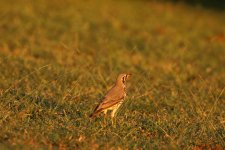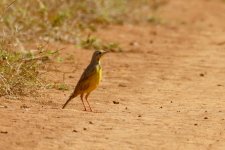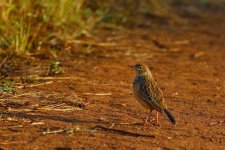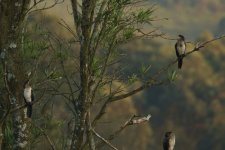Helen O
Anything that flies

Have a few birds from my Swaziland trip in May/June. All seen either at Mlilwane (near Ezulwini Valley) or Hlane, in the east of the country.
I have had a stab at id'ing them, thinking perhaps:
1. Ground-scraper thrush? Simply because of the markings
2. Perhaps Yellow throated Longclaw...?
3. Rufous Naped Lark, or....? Appreciate colours not great, as photographed early morning in the golden hour.
4. Quite far, but some kind of cormorant? Reed? White-breasted?
Many thanks.
I have had a stab at id'ing them, thinking perhaps:
1. Ground-scraper thrush? Simply because of the markings
2. Perhaps Yellow throated Longclaw...?
3. Rufous Naped Lark, or....? Appreciate colours not great, as photographed early morning in the golden hour.
4. Quite far, but some kind of cormorant? Reed? White-breasted?
Many thanks.








